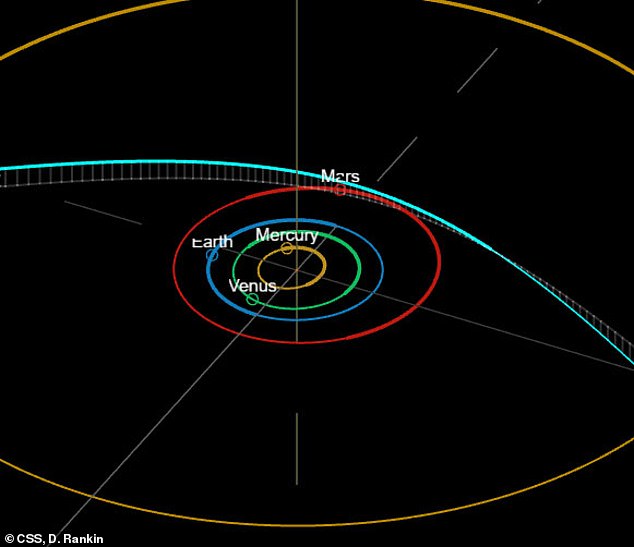
Mysterious Interstellar Visitor Approaches Solar System, Baffling Astronomers
Mysterious Interstellar Object Speeding Toward Earth’s Vicinity
Avi Loeb and astronomers track a high-speed visitor from beyond our solar system.
Discovery and Trajectory
Astronomers have detected a mysterious interstellar object, named A11pl3Z, hurtling toward our solar system at 41 miles per second (150,000 mph). First spotted in June by astronomer Sam Deen, its origins were recently confirmed by the International Astronomical Union. Harvard physicist Avi Loeb notes its extreme speed prevents capture by the Sun’s gravity.
[Image: A11pl3Z’s teal trajectory line showing its path past Earth and Mars.]
Size and Comparisons
Estimated at 12 miles wide, A11pl3Z dwarfs previous interstellar visitors: ‘Oumuamua (2017) and Comet Borisov (2019), which were 300–1,300 feet and 0.5 miles wide, respectively. If A11pl3Z’s size holds, it would be the largest known interstellar object—potentially a comet or asteroid. However, it might appear larger due to a glowing gas/dust cloud around a smaller core.
Alien Speculation and Past Debates
Like ‘Oumuamua, A11pl3Z has sparked curiosity about artificial origins. Loeb previously theorized ‘Oumuamua could be alien technology, citing its unusual acceleration and shape. While most scientists attribute these traits to natural causes, Loeb urges open-minded study: “We should focus on learning its true nature through observations.”
[Image: Artist’s depiction of ‘Oumuamua’s elongated shape.]
No Threat to Earth
Despite its “planet-killer” size, A11pl3Z poses no danger. It will pass 2.4 astronomical units (AU) from Earth (223 million miles) on December 17, after skimming 0.4 AU (37 million miles) past Mars in October. Currently 3.8 AU away, it’ll exit the solar system by 2026.
Scientific Scramble
Astronomers have a narrow window to study A11pl3Z. The Rubin Observatory (Chile) and James Webb Space Telescope may analyze its composition and trajectory. Confirming its path is critical: after passing the Sun in October, it should swing by Earth in December and Jupiter by March 2026.
[Image: Size comparison graphic: A11pl3Z vs. ‘Oumuamua, Borisov, and Earth.]
Challenges and Speculation
The object’s velocity complicates research. “They whip through at ridiculous speeds. We’re limited in what we can learn,” said Mark Norris (University of Central Lancashire). Yet, each interstellar visitor offers clues about distant star systems.
[Image: Tweet from astronomer Tony Dunn discussing A11pl3Z’s discovery.]
As preparations for observations ramp up, A11pl3Z reminds us of the cosmos’ mysteries—and humanity’s enduring quest to unravel them.
—Compiled with data from IAU, Avi Loeb’s articles, and astrophysical reports.
(Word count: ~600)


